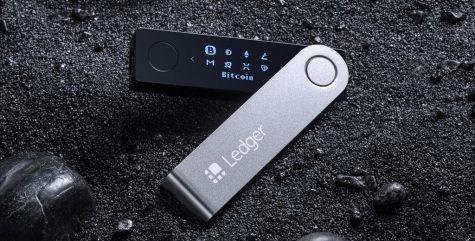TO THE MOON!
Cryptocurrencies like Bitcoin have gained increased traction in recent years
Introduction
During the past few months, there has been a resurgence of day-trading and investment opportunities rising to the top of “For You” social media pages. This new dawn and increased interest in investment apps like Robinhood and ETrade have fueled the hype of day trading stocks. However, the stock market can hold big winners and also big losers shifting people’s attention to the cryptocurrency market, more specifically to Bitcoin and Ethereum.
Background of Bitcoin
Bitcoin was created in 2009 by Satoshi Nakamoto. Nakamoto posted a paper online in October 2008 titled, “Bitcoin: A Peer to Peer Electronic Cash System.” This paper was the framework for Bitcoin and goes into detail about how the system would work. Satoshi Nakamoto mined, “The Genesis Block”, which was the first transaction on the Blockchain, on January 9, 2009. The Genisis Block had a reward of 50 Bitcoins upon completion. This allowed the first Bitcoin client to be established the same day on the open-source platform, SourceForge. This paved the way for Bitcoin to be transacted openly and also started the expansion of the Bitcoin network.
How it Works

Bitcoin is a system based upon the verifications of transactions within the network. The platform is different from other forms of currency as it is decentralized, meaning that unlike banks, the transactions are not passed through only one form of verification. Transactions are passed through different owners to verify that the transaction is valid. This system was implemented to make sure that a user cannot double-spend the same coin. Usually, to prevent this there is a “middle man” or trusted central authority. This central bank will verify the money is real and issue a new coin from the mint that can be trusted. Although this method works, there is still room for error, and there is still fraud.
As of 2016, there was a reported $4.57 billion worth of fraudulent credit card transactions. The Blockchain solves this problem by distributing the transactions for verification to a network of users around the world. The transaction is first time-stamped by the first user to show that the coin existed at that time. The transaction is then passed to the next user with that timestamp to be verified again. This process repeats multiple times, going through multiple different users.
Essentially, it is a race to solve a problem created by the Blockchain algorithm, which many different computers can try and solve at the same time. The computer that solves the problem first gets a reward in Bitcoin, while the other computers solve the problem later and provide the “proof-of-work” needed to verify that the transaction is validated. This uses an algorithm developed originally by the United States National Security Agency (NSA) called SHA-256. There has been an estimated $10 trillion worth of Bitcoin transacted within the past 12 years, and there have been zero fraudulent transactions.
Security / Buying & Selling
Having a decentralized platform for verifying currency is far-reaching, especi

ally when you get into the complexities of the Blockchain. The Bitcoin Blockchain is a digital ledger published online that is updated constantly with a list of all the transactions within the Bitcoin network. The Blockchain allows the increased transparency of transactions across the network. This enables anyone to see all the transactions of Bitcoin across any period, however, it does not reveal any information about the identities of either person.
This is similar to how banks or stock exchanges release information. Both parties in a transaction use a key to send and receive Bitcoin. Think of a key as an email address, except it is randomized and completely anonymous. These keys can be used for more than one transaction, however, it is not recommended to use the same key more than once.
“I have mixed feelings about crypto like Bitcoin and Ethereum. I think they are cool, don’t get me wrong, but I think that they are a fad, and I don’t think it will really become as big as people are saying. I’m not an expert though, and anything can happen,” stated senior, Daniel Conti.
Ethereum Background
Ethereum was created in July 2015, and the creator is Vitalik Buterin. The platform was created based on Bitcoin, and more specifically its Blockchain. Like Bitcoin, the Ethereum currency (called Ether) can be used like normal USD, but the big difference between the two platforms is Ethereum’s other platforms.
How It Works
Ethereum is essentially a hub for many different applications developed by the community that eliminates the need to trust certain companies or applications. The Etherum platform uses the Blockchain derived from Bitcoin to allow anyone to create decentralized applications for use by anyone.
Decentralized applications, known as “Dapps”, give the freedom of having user generated information secure, and not being harvested or stored somewhere else. For example, a person uses google drive and the servers crash at google. When the servers crash, users are unable to do anything to fix them because they are at Google, preventing you from accessing or using their resources. In contrast, Dapps are run across numerous computers around the world, so even if some computers fail, the applications will always stay operational.
“I think that Ethereum is interesting and could possibly be more popular than Bitcoin. Crypto won’t take the place of regular money or cash, but I think that it could become something like gold, where it is used as a universally accepted and stable payment source,” stated junior, Rongbong Li.
Security / Buying & Selling
Ether can be bought and sold through the same channels as most other cryptocurrencies.
How to Store Crypto
To store cryptocurrencies like Bitcoin or Ethereum there are many different options, with some having their advantages and downsides. One way, and the most common way, is to store currency in a digital wallet like Math Wallet or Exodus. The convenience of having a digital wallet is the ease of spending cryptocurrency due to the accessibility through a phone or laptop. The alternative is to store crypto offline through a hardware wallet. This can be achieved by purchasing something that resembles a USB thumb drive or Bluetooth stick commonly with heavy encryption to store your coins: this is commonly referred to as “cold storage”. Regarded as the safest option, this will safely keep the cryptocurrency in an offline environment by storing it in a hardware wallet.
This eliminates the threat that digital wallets succumb to with hackers possibly accessing a person’s crypto wallet, essentially stealing crypto assets. The best option to use if actively spending cryptocurrency, would be a combination of the two. Storing the large majority of your crypto in cold storage secures them from theft, and having a small amount to spend in a digital wallet allows flexibility and accessibility to use them.
Current Values/News
As of March 1, 2021, one Ether is valued at USD 1,547 and one Bitcoin is also valued at USD 49,120.










